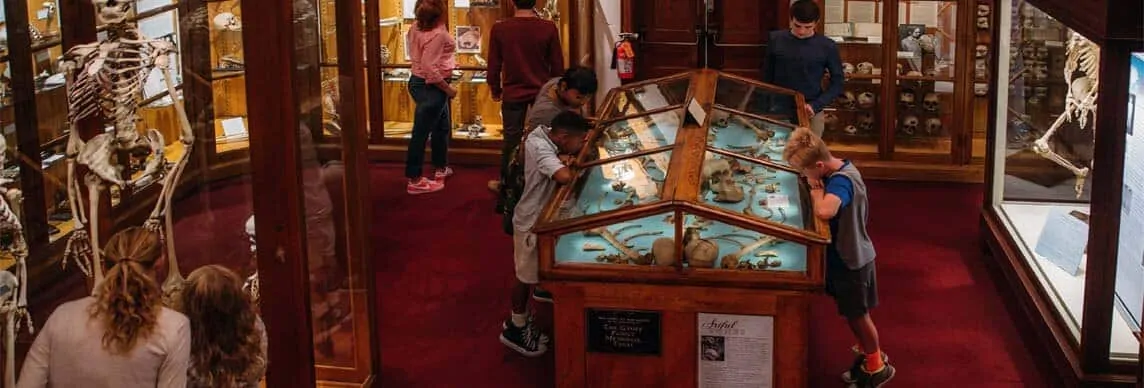Situated inside the home office of the College of Physicians of Philadelphia, the Mutter Museum has an extensive variety of wondrous and inquisitive restorative showcases.
These fuse the skeleton of the tallest known man ever to have lived in North America and the merged bones of Harry Eastlack, who kicked the container of Fibrodysplasia Ossificans Progressiva, a to an extraordinary degree phenomenal perplexity in which the sensitive connective tissue of the body sets, terribly hardening the body in a steady state. These and various diverse shows are appeared in a bit of a comparative Victorian pantries that the authentic focus began with in 1858.
Among the expansive social occasion is a game plan of mind slides curated not because of its blemishes, but instead in perspective of its remarkable shine. They look like strands of kelp, or shards of bark. Regardless, frankly, these slides contain sections from the brain of the twentieth century’s most notable analyst: Albert Einstein.
Einstein in all likelihood wouldn’t have been fulfilled. He should have been burned, and by and large he got his craving. (His red hot garbage were scattered in a puzzle spot on the Delaware River.) However, the pathologist on commitment the night Einstein kicked the basin in Princeton, New Jersey, expected to keep the monstrous physicist’s cerebrum a long way from the bursts, with the objective that others may one day consider it for snippets of data to his virtuoso.
The pathologist, Thomas Harvey, ended up caught in performance with Einstein’s family and specialist, likewise the mending focus, yet rather was at last allowed to keep the cerebrum as long as he used it only for coherent examination (no excursion spots allowed). At in the first place, analysts who analyzed little portions of the diminish issue saw nothing odd, yet by the 1980s, some began to find captivating features in locales related with visual, numerical, and spatial getting ready. Taking everything in account Einstein’s Sylvian hole (a prominent segment) was shorter than typical, while his parietal folds were possibly more broad, and his left below average parietal projection wealthier in glial cells (which maintain neurons). Neuroscientists have assessed that this designing may have empowered Einstein to think with the kind of “familiar play” of pictures that he ensured was basic to his divulgences.
Nevertheless, the typology of Einstein’s cerebrum can never absolutely speak to his brilliance, to some degree since we don’t know what began things out: was Einstein a virtuoso since his brain looked thusly, or did it look therefore in light of the way that he was a virtuoso? It’s hard to know, especially without a significant measure of other Einstein-quality brains available. Meanwhile, this cerebrum—a setback of 1950s-period protection techniques and Harvey’s various treks around the country—is never again alive and well for consider.
The Mütter’s forty-six amplifying focal point slides of the psyche began from a Philadelphia neuropathologist named Lucy Rorke-Adams, who offered them to the chronicled focus in 2011. She got them from an accomplice in the ’70s, who got them from Harvey himself. An octogenarian herself, Rorke-Adams said she expected to find a secured put for the slides already she passed on. She picked well, and the slides are by and by one of the recorded focus’ most prized having a place.
Scarcely observable, anyway worth poring over, is the collection of 2,000 articles ousted from people’s throats, housed in engaging wooden pullout demonstrate drawers. These are from the Chevalier Jackson Foreign Body Collection, amassed by Chevalier Jackson, who is believed to be the best laryngologist ever.
Furthermore especially convincing are the conjoined twin skeletons, deliberately appeared in changed in good spirits positions; the mortar passing cast of watched “Siamese Twins” Chang and Eng Bunker, who kicked the pail inside hours of each other; the “Chemical Lady,” an uncovered dead body from the 1800s unprecedented for the waxy substance that fit in with it in the midst of weakening; and enough horrifyingly-distinct wax models and ensured human hatchlings to toward the end more than a lifetime.
Know Before You Go
Alert: The Mütter Museum isn’t for the black out of heart and kids are disheartened from going to. Open from 10 a.m. to 5 p.m. day by day.





